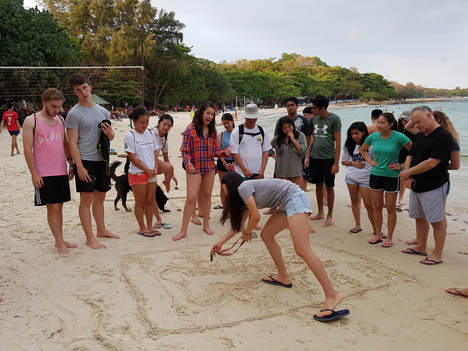I.A. Fieldwork Preparation
Introduction
Types of information for collection
Primary informationThis information must come from the student’s own observations and measurements collected in the field. This “primary information” must form the basis of each investigation. Fieldwork must provide sufficient information to enable adequate interpretation and analysis.
Fieldwork investigations may involve the collection of both qualitative and quantitative primary information. The type of information collected should be determined by the aim and fieldwork question.
Quantitative information is collected through measurement and may be processed using statistical and other techniques.
Qualitative information is collected though observation or subjective judgment and does not involve measurement. Qualitative information may be processed and coded or quantified where appropriate, or it may be presented through images or as text. (Students are advised to remember the word limit when presenting qualitative information as text only.) The nature of qualitative data should provide sufficient information for analysis and conclusion
Secondary informationThis research involves gathering information from sources that have already been compiled in written, statistical or mapped forms. Secondary information may supplement primary information but must only play a small part in the investigation. All secondary information must be referenced, using a standard author–date system, such as the Harvard system. This includes information from the internet, where references should include titles, URL addresses and dates when sites were visited. All sources of secondary information must be referenced. Footnotes may be used to reference material and will not be included in the word count provided that they are brief (up to 15 words as noted below).
Primary informationThis information must come from the student’s own observations and measurements collected in the field. This “primary information” must form the basis of each investigation. Fieldwork must provide sufficient information to enable adequate interpretation and analysis.
Fieldwork investigations may involve the collection of both qualitative and quantitative primary information. The type of information collected should be determined by the aim and fieldwork question.
Quantitative information is collected through measurement and may be processed using statistical and other techniques.
Qualitative information is collected though observation or subjective judgment and does not involve measurement. Qualitative information may be processed and coded or quantified where appropriate, or it may be presented through images or as text. (Students are advised to remember the word limit when presenting qualitative information as text only.) The nature of qualitative data should provide sufficient information for analysis and conclusion
Secondary informationThis research involves gathering information from sources that have already been compiled in written, statistical or mapped forms. Secondary information may supplement primary information but must only play a small part in the investigation. All secondary information must be referenced, using a standard author–date system, such as the Harvard system. This includes information from the internet, where references should include titles, URL addresses and dates when sites were visited. All sources of secondary information must be referenced. Footnotes may be used to reference material and will not be included in the word count provided that they are brief (up to 15 words as noted below).
Fieldwork Techniques

Guide: Student guide for investigations - Royal geographic Society
Guide: 80 tools for fieldwork
Guide: Geographical investigations
Survey Preparation

Google Earth: A powerful tool for getting to know Ko Samet
Google Maps:
Google Maps Street View
|
|
|
Google Maps Locations
|
|

